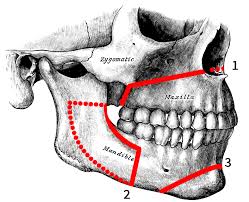ORTHOGNATHIC SURGERY
It frequently results in the quick degradation of teeth and challenges in chewing.

The face often reflects one's inner thoughts, but sometimes what you see in the mirror doesn't match your true self. This mismatch can be due to developmental issues, growth disturbances, or injuries. Jaw misalignment is a common issue that can cause pain and alter your facial appearance, leading to rapid tooth deterioration and difficulty chewing. Orthognathic surgery, or corrective jaw surgery, can address these problems. Orthodontic procedures straighten the teeth, while corrective surgery repositions misaligned jaws. These treatments not only improve facial appearance but also ensure that teeth meet correctly and function properly.
Surgery planning typically involves a multidisciplinary team, including oral and maxillofacial surgeons, orthodontists, and sometimes speech and language therapists. Given the significant change in facial appearance post-surgery, a psychological assessment is occasionally required to evaluate the patient's need for surgery and its potential impact.

Who Needs Orthognathic Surgery?
If you have an incorrect or misaligned bite, corrective jaw surgery might be beneficial for you. Jaw growth happens gradually, and sometimes the upper and lower jaws grow at different rates. Injuries and congenital defects can also impact jaw alignment. These issues can affect chewing, speech, long-term oral health, and facial appearance. While orthodontics can fix bite problems involving just the teeth, orthognathic surgery can realign the jaws, addressing even severe functional and cosmetic concerns.

Procedure
The surgery might involve one jaw or the two jaws during the same procedure. The modification is done by making cuts in the bones of the lower jaw and / or upper jaw and repositioning the cut pieces in the desired alignment. Usually surgery is performed under general anaesthesia and the surgery often does not involve cutting the skin, and instead, the surgeon is often able to go through the inside of the mouth. Jaw surgery takes place in the hospital and requires a one- to two-day stay. Complete recovery at home typically takes three to six weeks.
In most cases, an orthodontist places braces on your teeth before surgery. Braces are usually on for nine to eighteen months before surgery to level and align your teeth. After your jaw heals from surgery, typically about six weeks after surgery your orthodontist finishes aligning your teeth and eventually removes the braces. The entire orthodontic process, including surgery, may last 18 to 24 months.

